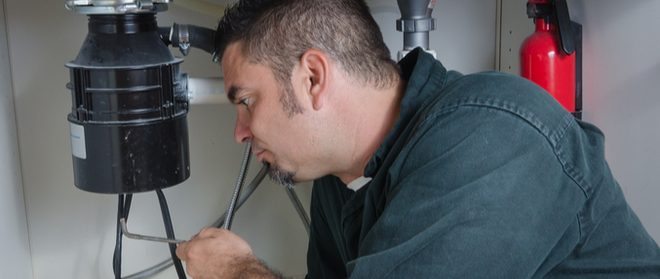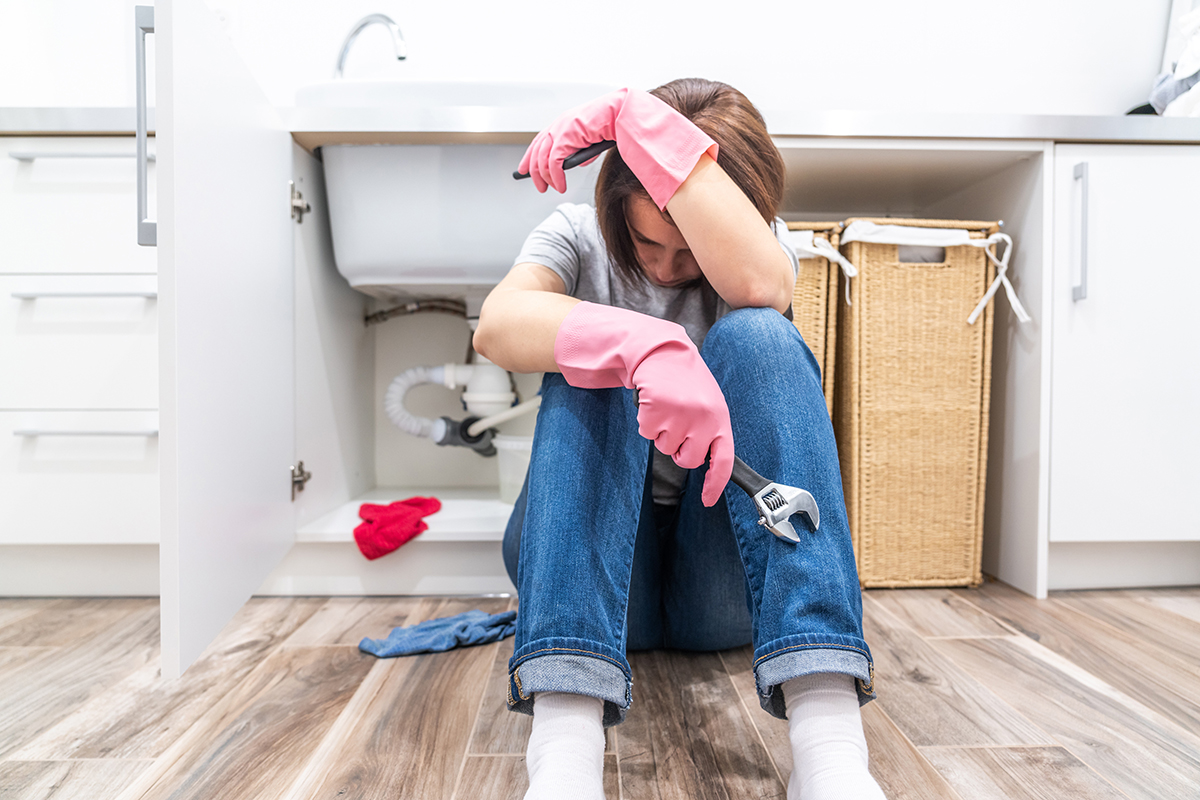Nearly everybody has got their own rationale in relation to Why Is .

Waste disposal unit are essential kitchen appliances that help in taking care of food waste effectively. Nonetheless, a leaking garbage disposal can be an aggravating and untidy trouble to handle. Luckily, lots of leaks can be taken care of quickly with a couple of straightforward steps. In this article, we will talk about how to fix a dripping garbage disposal effectively.
Introduction
Garbage disposals are mounted under kitchen area sinks and are made to shred food waste right into smaller sized items, permitting it to pass through the pipes system quickly. While these gadgets are generally reputable, leaks can happen in time as a result of deterioration, loose connections, or damages to the system.
Step-by-Step Overview to Repairing a Dripping Garbage Disposal
Shut off the Power
Prior to attempting any repair services, guarantee that the power to the waste disposal unit device is turned off to avoid the threat of electrical shock.
Locate the Leak
Identify the precise place of the leakage and identify the cause
Tighten Connections
Use a wrench to tighten any loose connections between the disposal system and the plumbing system.
Change Seals or Gaskets
If the leakage results from worn seals or gaskets, get rid of the old elements and replace them with new ones.
Patching Cracks or Openings
For splits or openings in the disposal unit, usage epoxy or an ideal patching material to seal the damaged location.
Recognizing the Source of the Leak
Before trying to fix a leaking waste disposal unit, it is necessary to identify the source of the leakage. This can generally be done via aesthetic evaluation or by performing straightforward tests.
Visual Evaluation
Examine the garbage disposal device very carefully for any kind of signs of water leak. Pay close attention to locations around seals, gaskets, and link points.
Examining for Leakages
One way to examine for leakages is by running water with the disposal device and looking for any visible indications of leakage.
Typical Causes of Leakages in Waste Disposals
Worn Seals and Gaskets
Seals and gaskets play a vital role in protecting against water from leaking out of the garbage disposal. With time, these parts can deteriorate, leading to leaks around the disposal device.
Loose Links
The links in between the garbage disposal and the pipes system can become loosened in time, creating water to leak out throughout procedure.
Fractures or Openings in the Disposal Unit
Physical damage to the waste disposal unit, such as splits or holes in the housing, can likewise cause leaks.
Tools and Products Needed for Repairing a Leaking Garbage Disposal
Before starting the repair work process, collect the needed devices and products, including a screwdriver, adjustable wrench, plumbing professional's putty, replacement seals or gaskets, and epoxy or patching product for repairing cracks or openings.
Examining the Waste Disposal Unit After Fixing
As soon as the fixing is complete, examine the waste disposal unit by running water through it to guarantee that the leakage has actually been settled.
Preventive Upkeep Tips to Prevent Future Leakages
To prevent future leakages, it is important to execute routine upkeep on your garbage disposal. This consists of keeping it tidy, preventing placing non-food items or hard objects down the disposal, and periodically looking for leakages or various other issues.
Final thought
To conclude, taking care of a dripping waste disposal unit is a reasonably uncomplicated procedure that can be finished with basic tools and materials. By following the actions described in this short article and exercising preventative upkeep, you can keep your waste disposal unit in good working condition and prevent pricey repair work in the future.
What to Do About a Leaking Garbage Disposal
A leaking garbage disposal often goes unnoticed until you confront a sopping cabinet, a foul-smelling puddle, or an audible drip-drip-drip from the unit. The fix can be frustrating, too, because the leak can stem from a number of components in the system. Fortunately, with a little sleuthing, you can zero in on the leak and—depending on the exact location—stop the icky oozing and repair the component that caused it. Worst case scenario, if it turns out that the garbage disposal must be replaced, installing a new one is a reasonable do-it-yourself task for those with basic plumbing skills. Read on to keep the cash you’d otherwise hand over to a pro.
Prepare to find the leak
Prior to testing the garbage disposal for leaks, unplug it at the wall outlet and turn off the power from the breaker box to prevent electrical shock. Then insert a watertight sink stopper into your sink drain and wipe the unit dry with a clean cloth. In any handy container, mix a few drops of food coloring into a few cups of water, and pour the dyed water onto the sink stopper to help you locate the leak.
Investigate the source
the top, where the disposal meets the sink drain the side, where the dishwasher hose or main drain pipe connects to the disposal or the bottom of the unit Inspect each of these locations while gliding a light-colored rag over the unit; the dyed water will readily show on the rag and reveal the location of the leak. If a leak isn’t immediately apparent, remove the sink stopper and pour a few more cups of dyed water down the sink drain, then check for leaks again. Leaks near the top of the unit are more likely to show themselves while the sink is plugged, while side and bottom leaks are more noticeable while the sink is unplugged.
The metal sink flange that sits directly inside the sink drain is typically sealed around the top with plumber’s putty (a clay-like sealant) and then secured from under the sink with bolts. If the plumber’s putty deteriorates, or the bolts loosen, the flange can no longer form a watertight seal between the sink drain and the disposal—which could cause a leak at the top of the unit.
To reseal the leaky flange, you must first detach the garbage disposal. Start by loosening the screws securing the main drain pipe to the disposal, then loosen the screws in the metal clamp securing the dishwasher hose to the disposal and detach the drain pipe and dishwasher hose from the disposal. Loosen the screws in the mounting ring that connects the disposal to the metal mounting assembly beneath the sink, then pull down the disposal and carefully set it on a clean, dry surface. Loosen the bolts in the mounting assembly with a wrench, then pull down the mounting assembly and set it near the disposal.

I'm just very serious about Why Is My Garbage Disposal Leaking From the Bottom? and I really hope you liked the post. For those who appreciated our blog entry kindly don't forget to share it. Many thanks for going through it.
Book My Estimate
 Rick Moranis Then & Now!
Rick Moranis Then & Now! Talia Balsam Then & Now!
Talia Balsam Then & Now! Robbie Rist Then & Now!
Robbie Rist Then & Now! Dawn Wells Then & Now!
Dawn Wells Then & Now! McKayla Maroney Then & Now!
McKayla Maroney Then & Now!